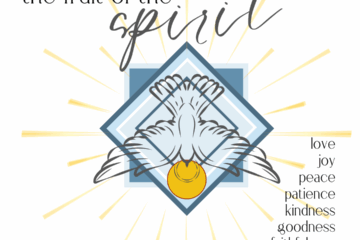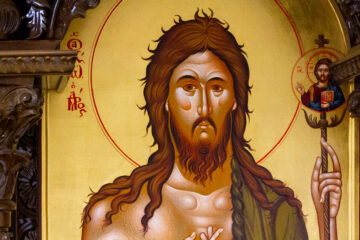Elder Ephraim of Arizona †
We’re Orthodox, yet essentially we don’t know the height, depth and breadth of Orthodoxy. We must see it in all its holiness.
What is Orthodoxy? Orthodoxy is the truth, the correct dogma concerning God, human beings and the world, as this was given to us by the incarnate God himself through his wonderful teaching, his holy life and his redemptive sacrifice. It was then articulated by the God-inspired heart and mind of Saint Paul; it was brought to life by the disciple of love and the other Evangelists and Apostles through the celestial light of the Holy Spirit; it was handed down to us by the Spirit-moved Fathers of Alexandria, Constantinople, Cappadocia, Syria, Palestine and, later, the Holy Mountain.
Through their wisdom and holiness, their sacrifices and struggles, all of these, from Saint Polycarp, the disciple of the Apostles down to Saint Nikodimos the Athonite, who went to his rest at the beginning of the century before last, handed down the reservoir of the correct faith and life, the treasury of the Orthodox tradition.
Orthodoxy is the wonderful synthesis of dogma and ethos, of theory and practice. Orthodoxy is also that which was formulated in a more formal way by the Synods, those blessed ecumenical congresses of the whole Church of Christ from around the world.
Then the God-bearing Fathers, ‘drawing up all the science of the soul and gathered together in the Holy Spirit’, decided on the greatest problems which interest spiritual people and set the basis, the foundations of the spiritual life, which is the real spiritual civilization.
Orthodoxy has been sealed by the martyrs of all eras, by the whole army of the millions of heroes and confessors, men, women and children, through their precious blood. From the amphitheaters of Rome to the prison camps of Russia, they’ve shown that Christianity isn’t just a theory but is truth and life. It’s the most wonderful heroism, the victory over raw violence and material power, and is the triumph of the kingdom of the spirit.
Then there are the services which hymn Orthodoxy, with their beautiful poetry and inspired music, combining the natural with the supernatural, the secular with the heavenly, individualism with social interaction, familiarity with profound respect, and the readily understood with the mysterious. In church, at every Liturgy, in an uplifting atmosphere of sanctity, the sacrifice of Christ is performed, in which all the faithful take part. There, too, the achievements of the giants of the faith are hymned and emphasized, chief among this choir being Mary, the Mother of God. Dogma is hymned, not only as being true, but also as having responded to human predilections.
And the ideal for which monasticism has striven isn’t any different from the meaning of Orthodoxy. According to the experts, Orthodox monasticism was the spiritual army which fought for the acquisition of spiritual freedom and the completion of us people. Its aim was to ‘shape the soul by the renewal of the nous’.
This point is precisely the heart of the monastic spirit. It’s the aim and success of monasticism. The spiritual struggles of the ascetics are the new Olympic games of the spirit. They lead people to the quintessential philosophic life, to glorification. The course of asceticism is the course of purification and return to the divine.
And Orthodoxy has given the notion of holiness not only to ascetics, but to the whole complement of the Christian Church. In this way, it has elevated the morals of society. We see this particularly in social perceptions.
Orthodoxy is the progression of completed people towards their Maker, towards deification. It leads us to our full development in Christ and for Christ. Orthodoxy isn’t only the quintessential theology; it’s also true psychology, genuine humanism and socialism. It’s a multi-faceted diamond which, on all sides, produces new reflections of the truth.
So let’s get to know our Orthodoxy. Not theoretically. Let’s feel it and experience it in all its depth and breadth. Only then will we be able to project it and put it to its best use.
Most beautiful Orthodoxy, bride of Christ, bedecked with blood, may we unworthy people never, ever deny you, but if the times and circumstances call upon us, may we be allowed, beloved, to shed the last drop of our blood for you. Amen.
(extract from The Royal Road of the Gospel, p. 468)
Source: pemptousia.com



0 Comments